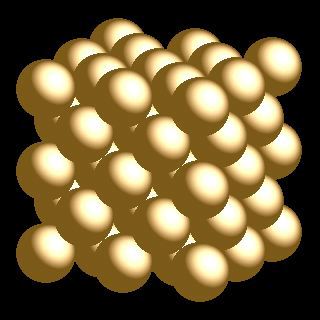Here is the generic procedure. Step 1: For the number of protons, it is equal to the atomic number. You can look up the atomic number for any element on the Periodic Table of the Elements, or any Table of the Elements. If you know the element’s. The atomic number of potassium is 19, and the atomic number of chlorine is 17. Knowing this information, how many valence electrons does each have? What type of bond do you predict they will form? Potassium has 1 valence electron. Chlorine has 7 valence electrons. Potassium will donate an electron to chlorine, giving each a full outer electron.
Atomic Number of Potassium is 19.

Chemical symbol for Potassium is K. Number of protons in Potassium is 19. Atomic weight of Potassium is 39.0983 u or g/mol. Melting point of Potassium is 63,7 °C and its the boiling point is 774 °C.
» Boiling Point» Melting Point» Abundant» State at STP» Discovery YearAbout Potassium
One of the vital elements for all living creatures, potassium exists in all living cells. Potassium is a very soft metal of light grey color which is very reactive with air and other chemical compounds. It is considered to be the 7th most abundant chemical element in the earth crust and it is usually processed from potassium chloride, which is quite abundant too. Potassium is essential for the cells of living organisms to maintain proper electrolyte and fluid balance. Daily dose of potassium for a human body is close to 7 grams, and we receive it mainly from foods like chocolate, nuts, bananas, potatoes, raisins, etc. This chemical element is used for producing fertilizers, and potassium also is important for producing glass. Various compounds involving potassium are heavily used in pharmaceutical industry.

Properties of Potassium Element
| Atomic Number (Z) | 19 |
|---|---|
| Atomic Symbol | K |
| Group | 1 |
| Period | 4 |
| Atomic Weight | 39.0983 u |
| Density | 0.862 g/cm3 |
| Melting Point (K) | 336.53 K |
| Melting Point (℃) | 63,7 °C |
| Boiling Point (K) | 1032 K |
| Boiling Point (℃) | 774 °C |
| Heat Capacity | 0.757 J/g · K |
| Abundance | 20900 mg/kg |
| State at STP | Solid |
| Occurrence | Primordial |
| Description | Alkali metal |
| Electronegativity (Pauling) χ | 0.82 |
| Ionization Energy (eV) | 4.34066 |
| Atomic Radius | 220pm |
| Covalent Radius | 196pm |
| Van der Waals Radius | 275 |
| Valence Electrons | 1 |
| Year of Discovery | 1807 |
| Discoverer | Davy |
What is the Boiling Point of Potassium?
Potassium boiling point is 774 °C. Boiling point of Potassium in Kelvin is 1032 K.
What is the Melting Point of Potassium?
Potassium melting point is 63,7 °C. Melting point of Potassium in Kelvin is 336.53 K.
How Abundant is Potassium?
Abundant value of Potassium is 20900 mg/kg.
What is the State of Potassium at Standard Temperature and Pressure (STP)?
State of Potassium is Solid at standard temperature and pressure at 0℃ and one atmosphere pressure.
When was Potassium Discovered?
Potassium was discovered in 1807.
Chemical properties of potassium - Health effects of potassium - Environmental effects of potassium
|
Potassium The name is derived from the english word potash. The chemical symbol K comes from kalium, the Mediaeval Latin for potash, which may have derived from the arabic word qali, meaning alkali. The chemistry of potassium is almost etirely that of the potassium ion, K+. Applications Most potassium (95 %) goes into fertilizers and the rest goes mainly into making potassium hydroxide (KOH), by the electrolysis of potassium chloride solution, and then converting this to potassium carbonate (K2CO3). Potassium carbonate goes into glass manufacture, expecially the glass used to make televisions, while potassium hydroxide is used to make liquid soaps and detergents. A little potassium chloride goes into pharmaceuticals, medical drips and saline injections. Potassium in the environment Most potassium occurs in the Earth's crust as minerals, such as feldspars and clays. Potassium is leached from these by weathering, which explains why there is quite a lot of this element in the sea (0.75 g/liter). Health effects of potassium
Environmental effects of potassiumTogether with nitrogen and phosphorous, potassium is one of the essential macrominerals for plant survival. Its presence is of great importance for soil health, plant growth and animal nutrition. Its primary function in the plant is its role in the maintenance of osmotic pressure and cell size, thereby influencing photosynthesis and energy production as well as stomatal opening and carbon dioxide supply, plant turgor and translocation of nutrients. As such, the element is required in relatively large proportions by the growing plant. The consequences of low potassium levels are apparent in a variety of symptoms: restricted growth, reduced flowering, lower yields and lower quality produce. Check out our potassium in water page Back to the periodic table of elements |
More from 'Elements'
Lenntech (European Head Office)
Distributieweg 3
2645 EG Delfgauw
The Netherlands
Phone: +31 152 610 900
fax: +31 152 616 289
e-mail: info@lenntech.com
Lenntech USA LLC (Americas)
5975 Sunset Drive
South Miami, FL 33143
USA
Phone: +1 877 453 8095
e-mail: info@lenntech.com
Lenntech DMCC (Middle East)
Level 5 - OFFICE #8-One JLT Tower
Jumeirah Lake Towers
Dubai - U.A.E.
Phone: +971 4 429 5853
e-mail: info@lenntech.com
Chemical Symbol For Potassium
Copyright © 1998-2021 Lenntech B.V. All rights reserved
